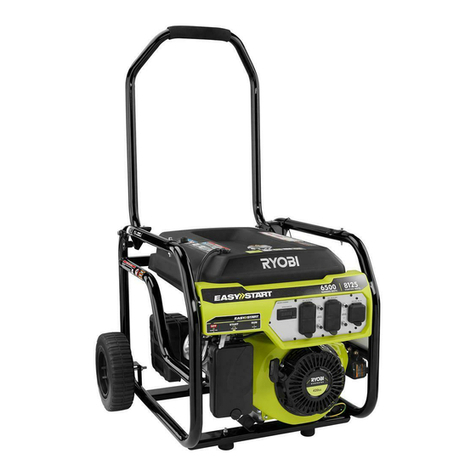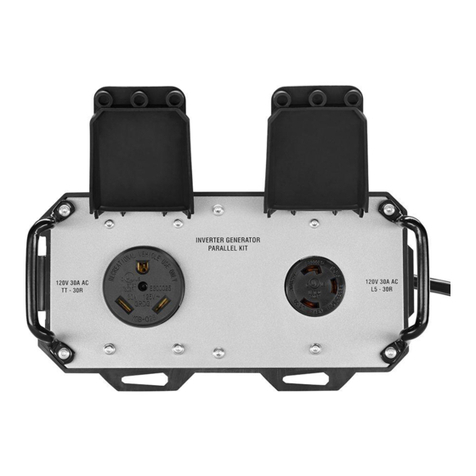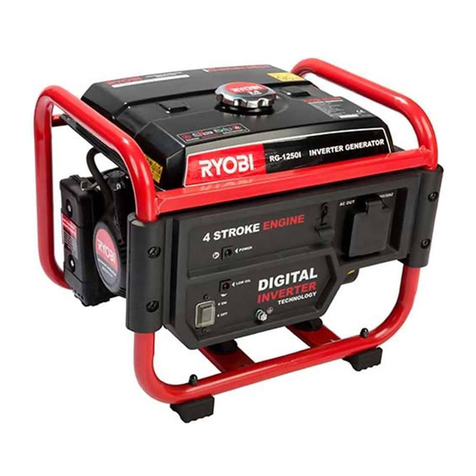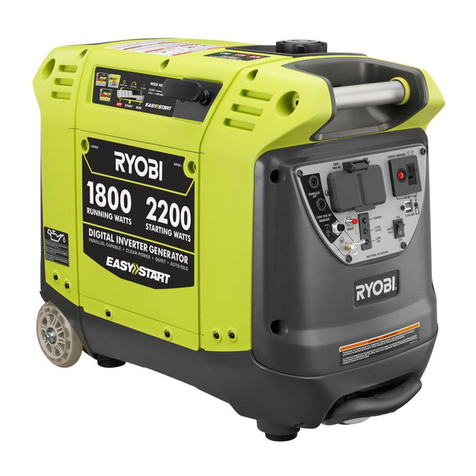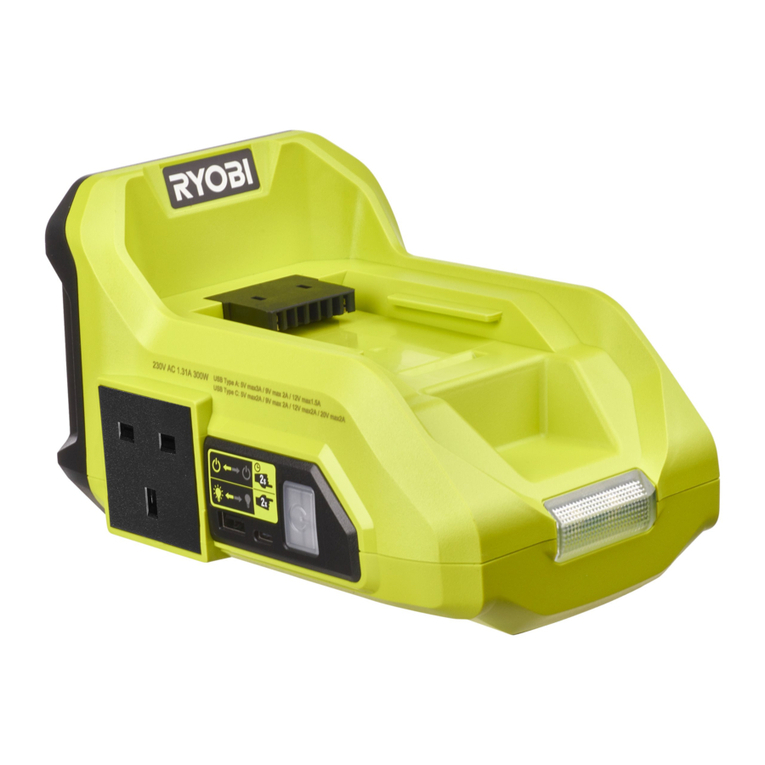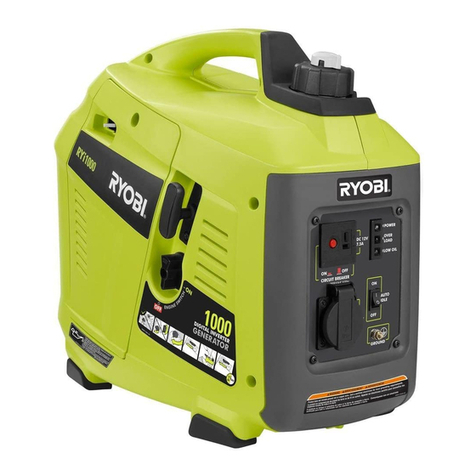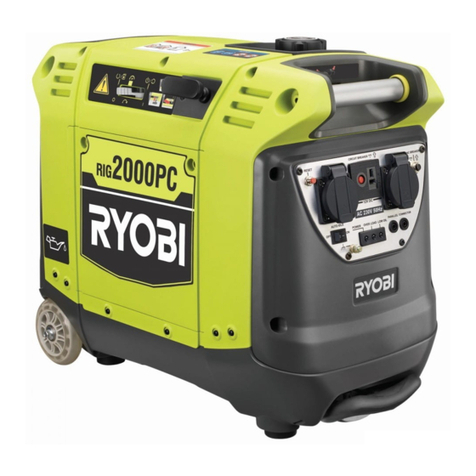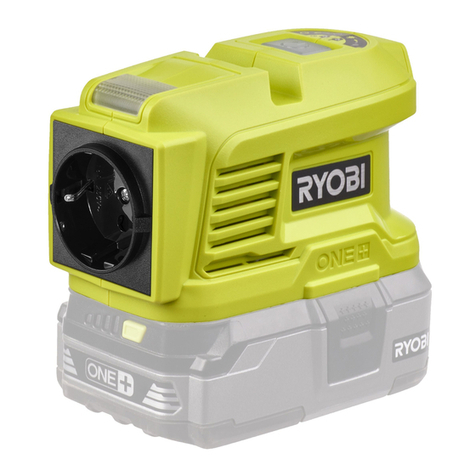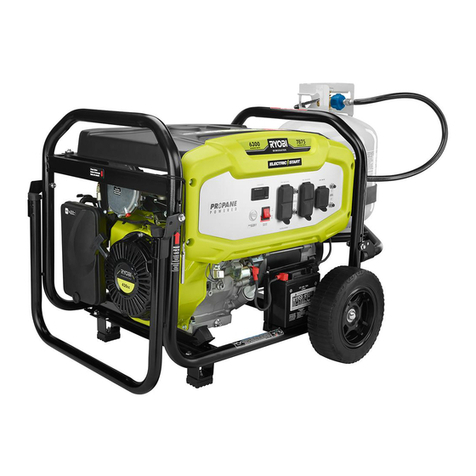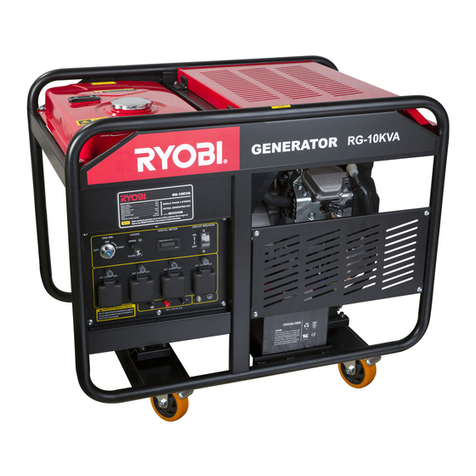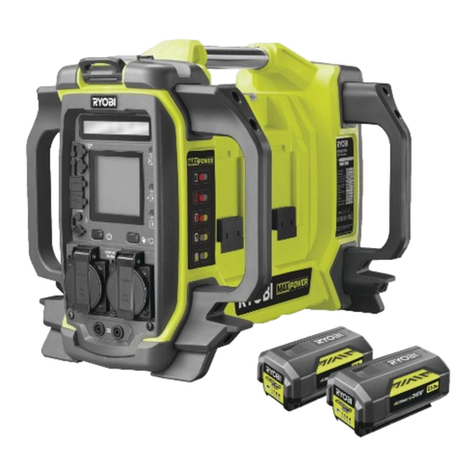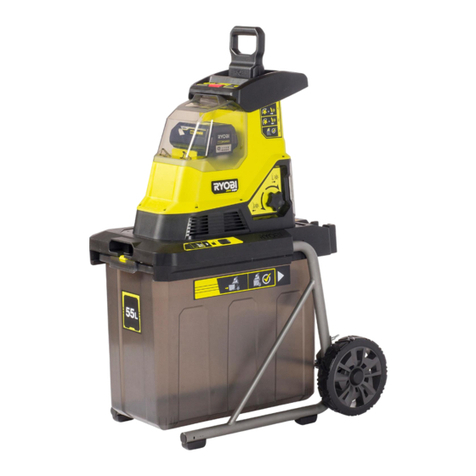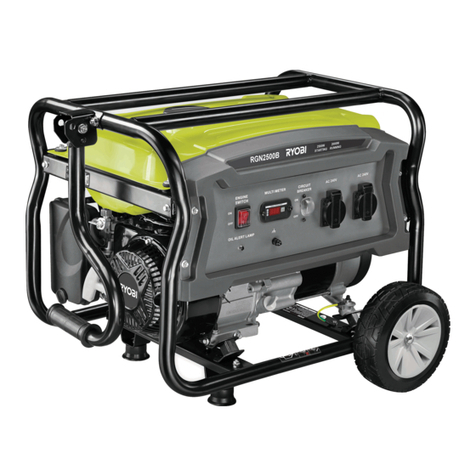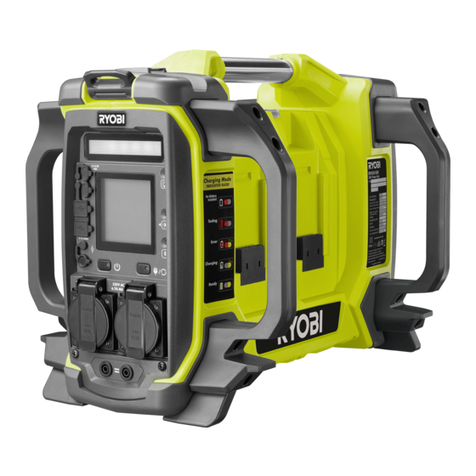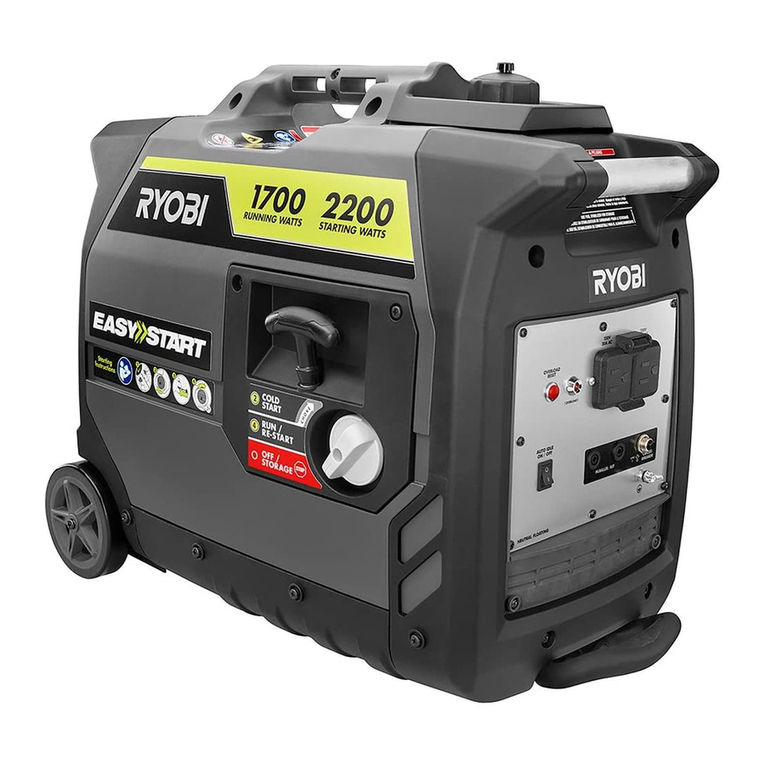
6
Position the unit on level ground, stop engine, and allow
to cool before refuelling.
Loosen fuel cap slowly to release pressure and to keep
fuel from escaping around the cap.
Tighten the fuel cap securely after refuelling.
Wipe spilled fuel from the unit.
Never attempt to burn off spilled fuel under any
circumstances.
Use only authorised replacement parts and accessories
and follow instructions in the Maintenance section of
this manual. Use of unauthorised parts or failure to
follow Maintenance instructions may create a risk of
shock or injury.
Maintain the unit per maintenance instructions in this
Operator’s Manual.
Inspect the unit before each use for loose fasteners,
fuel leaks, etc. Replace damaged parts.
Generators vibrate in normal use. During and after the
use of the generator, inspect the generator as well as
extension cords and power supply cords connected to
it for damage resulting from vibration. Have damaged
items repaired or replaced as necessary. Do not use
plugs or cords that show signs of damage such as
broken or cracked insulation or damaged blades.
For power outages, permanently installed stationary
generators are better suited for providing back-up
power to the home. Even a properly connected portable
generator can become overloaded. This may result in
overheating or stressing the generator components,
possibly leading to generator failure.
Use only authorised replacement parts and accessories
and follow instructions in the Maintenance section of
this manual. Use of unauthorised parts or failure to
follow maintenance instructions may create a risk of
shock or injury.
Maintain the unit as per the maintenance instructions
in this operator’s manual.
Inspect the unit before each use for loose fasteners,
fuel leaks, etc. Replace damaged parts.
SPECIFIC SAFETY RULES
WARNING:
When this generator is used to supply a
building wiring system: the generator must be
installed by a qualified electrician and connected
to a transfer switch as a separately derived
system in accordance with Australian Wiring
Rules. The generator shall be connected through
a transfer switch that switches all conductors
other than the equipment grounding conductor.
The frame of the generator shall be connected
to an approved grounding electrode. Failure to
isolate the generator from power utility can result
in death or injury to electric utility workers.
Do not use this generator to provide power for
emergency medical equipment or life support
devices.
Exhaust fumes contains poisonous carbon
monoxide, a colourless, odourless gas. Breathing
exhaust fumes can cause loss of consciousness and
can lead to death. If running in a confined or partially-
enclosed area, the air may contain a dangerous
amount of carbon monoxide. To keep exhaust
fumes from building up, always provide adequate
ventilation.
Always use a battery-powered carbon monoxide
detector when running the generator. If you begin to
feel sick, dizzy, or weak while using the generator,
shut it off and get to fresh air immediately. See a
doctor. You may have carbon monoxide poisoning.
Place the generator on a flat, stable surface with a
slope of no more than 4°.
Operate outdoors in a well-ventilated, well-lit
area isolated from working areas to avoid noise
interference.
Operating the generator in wet conditions could
result in electrocution. Keep the unit dry.
Keep the generator a minimum of 1 m away from all
types of combustible material.
Do not operate the generator near hazardous
material.
Do not operate the generator at a petrol station.
Do not touch the muffler or cylinder during or
immediately after use; they are hot and will cause
burn injury.
This generator has a neutral floating condition.
This means the neutral conductor is not electrically
connected to the frame of the machine.
Do not connect to a building’s electrical system
unless a transfer switch has been properly installed
by a qualified electrician.
Do not allow the generator’s gas tank to overflow
when filling. Fill to 25 mm (1") below the top neck
of the gas tank to allow for fuel expansion. Do not
cover the fuel tank cap when the engine is running.
Covering the fuel tank cap during use may cause
engine failure and/or damage to the tool.
Do not smoke when filling the generator with
gasoline.
Allow the engine to remain in a shut-down condition
for at least five minutes before adding unleaded fuel



